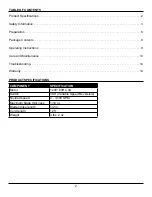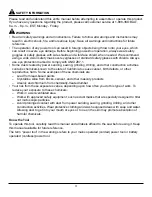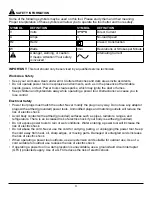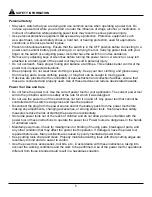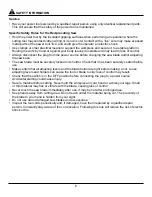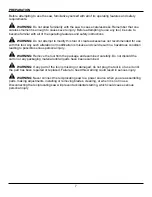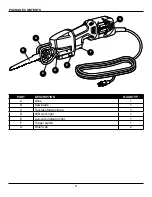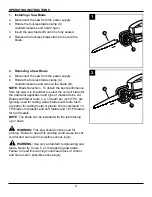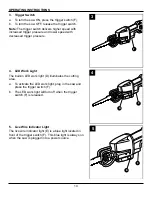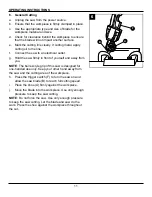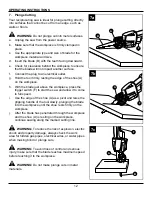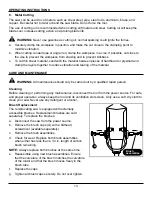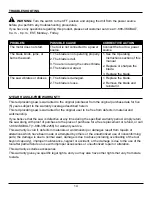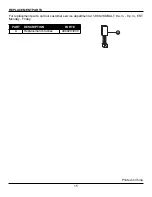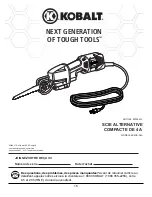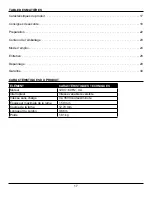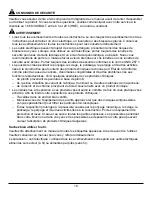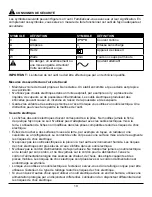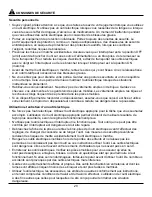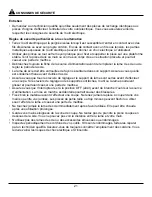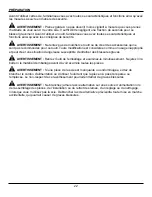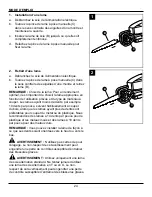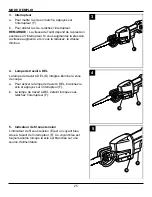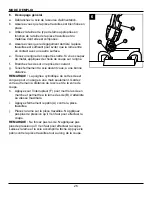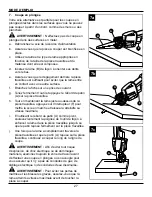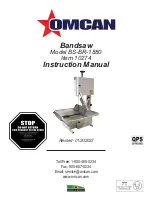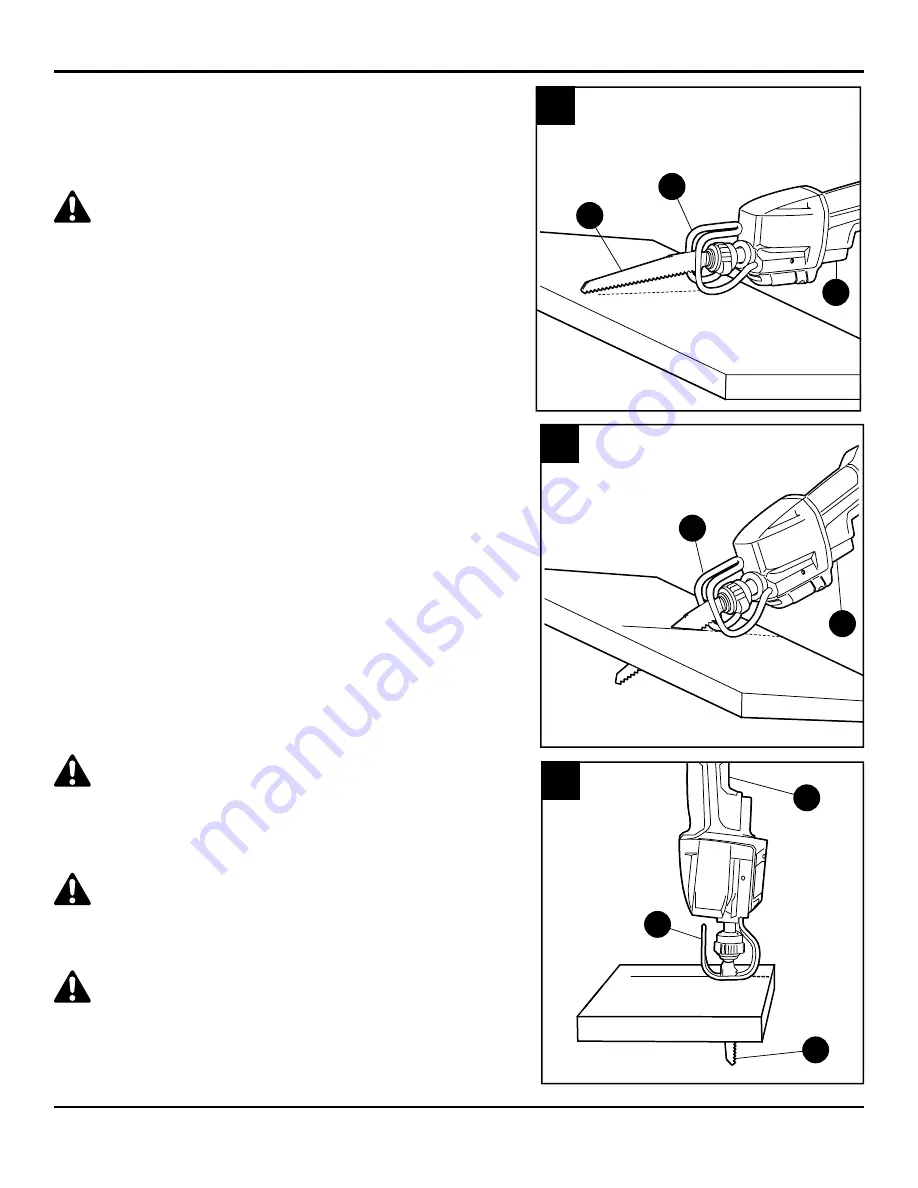
12
oPeraTinG insTruCTions
7. Plunge Cutting
Your reciprocating saw is ideal for plunge cutting directly
into surfaces that cannot be cut from an edge, such as
walls or floors.
WarninG:
Do not plunge cut into metal surfaces.
a. Unplug the saw from the power source.
b . Make sure that the workpiece is firmly clamped in
place.
c . Use the appropriate type and size of blade for the
workpiece material and size.
d . Insert the blade (B) with the teeth facing downward.
e . Check for clearance behind the workpiece to ensure
that the blade will not impact another surface.
f. Connect the plug to an electrical outlet.
g. Hold the tool firmly, resting the edge of the shoe (A)
on the workpiece.
h. With the blade just above the workpiece, press the
trigger switch (F) to start the saw and allow it to come
to full speed.
i . Use the edge of the shoe (A) as a pivot and raise the
gripping handle of the tool slowly, plunging the blade
into the workpiece until the shoe rests firmly on the
workpiece.
j. After the blade has penetrated through the workpiece
and the shoe (A) is resting on the workpiece,
continue sawing along the marked cutting line.
WarninG:
To reduce the risk of explosion, electric
shock and property damage, always check the work
area for hidden gas pipes, electrical wires, or water pipes
when making blind or plunge cuts.
WarninG:
To avoid loss of control and serious
injury, make sure that the blade reaches maximum speed
before touching it to the workpiece.
WarninG:
Do not make plunge cuts in metal
materials.
7a
F
A
B
7b
F
A
7c
F
B
A


